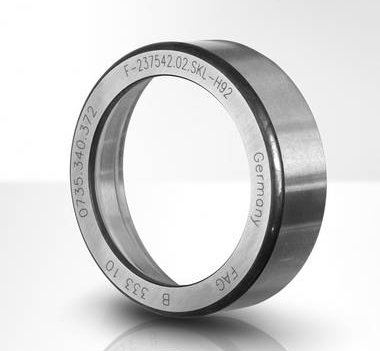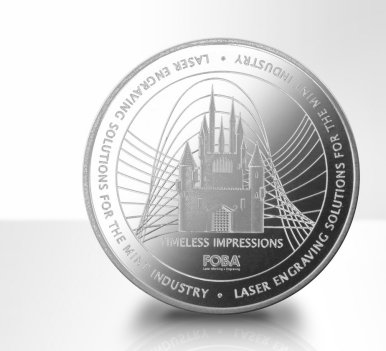To Mark or to Engrave?
With one of today’s laser marking systems, you can mark or engrave – the choice is yours.
In basic terms, laser marking discolours the surface of the material while laser engraving removes a portion of the surface area as it makes the mark.
With laser marking, a low powered beam moves across the material, causing oxidation under the surface and in the case of stainless steel or titanium turning the material black.
In laser engraving, a high power laser is pulsed, physically removing the surface of the material to create a cavity.


The smooth selection
In laser marking, the surface of the workpiece is left intact. That’s why laser marking is particularly popular in the medical device industry for stainless steel and titanium parts. In this and other industries, laser marking is ideal for bar codes, UID codes, QR codes, logos and other forms of identification.
High wear solution
For parts that are going to undergo high wear such as injection moulds in tool making, laser engraving is often the preferred method on virtually any material - metal, plastic, wood, leather, glass, etc..
Because the engraving can be several millimetres deep, it can stand the test of time under the most rigorous conditions. However, the downside of this is the time taken in the process – the deeper the engraving the longer it takes. In addition, a deep engraving may well affect the integrity of the part, accelerating wear.
Compared to traditional engraving, laser engraving provides more legible marks especially on small objects such as jewellery. It’s also faster, provides more font options with a smaller chance of product damage or deformation.
FOBA M-Series
Our product partners FOBA offer economic engraving and marking of small, large and geometrically complex workpieces through the M2000B and M3000B workstations. Both can handle small or large batches of parts.
They are extremely flexible with the option of fitting Y.0100, Y.0200, Y.0300 Y.0301 0r Y.0500 lasers. There are also three model options – B: with worktable, R: with turntable and P: with axes X/Y/Z.
Further options available include FOBA’s patented camera system, IMP, which automatically detects workpieces and their position and adjusts the engraving/marking process accordingly. It also detects changes in the part’s geometry or position and defects or faulty components ensuing less scrap and mismarked products. A verification feature also allows pre-mark and post-mark verification.
For further information on FOBA’s M2000B and M3000B engraving solutions and the IMP camera system, please contact sales@tlm-laser.com